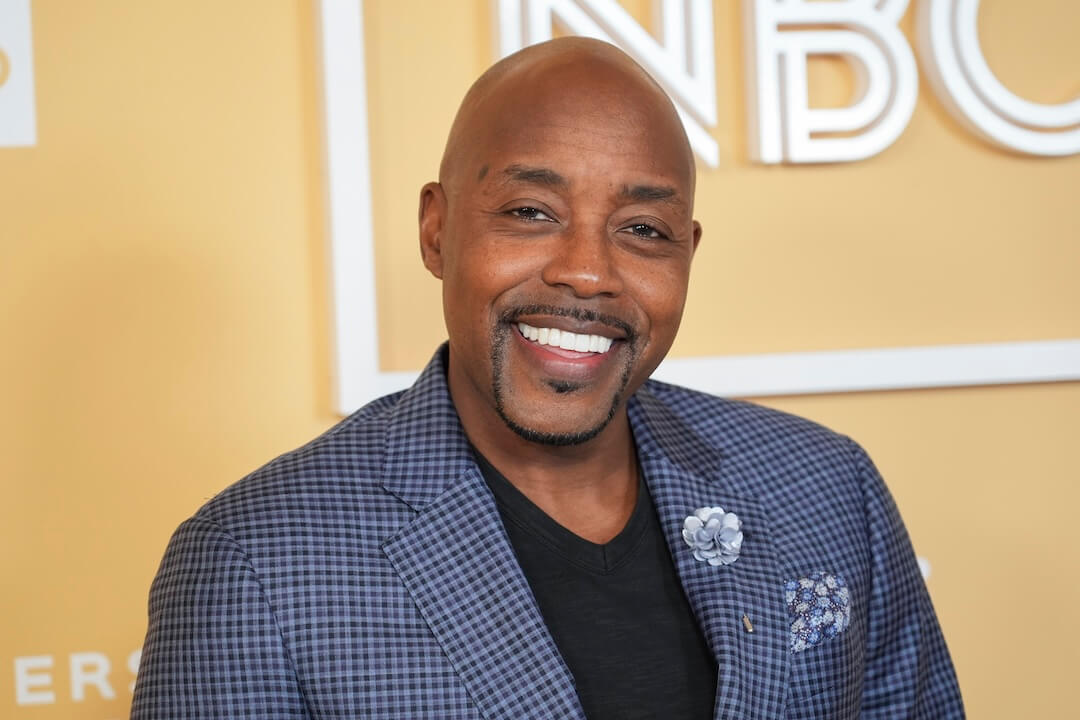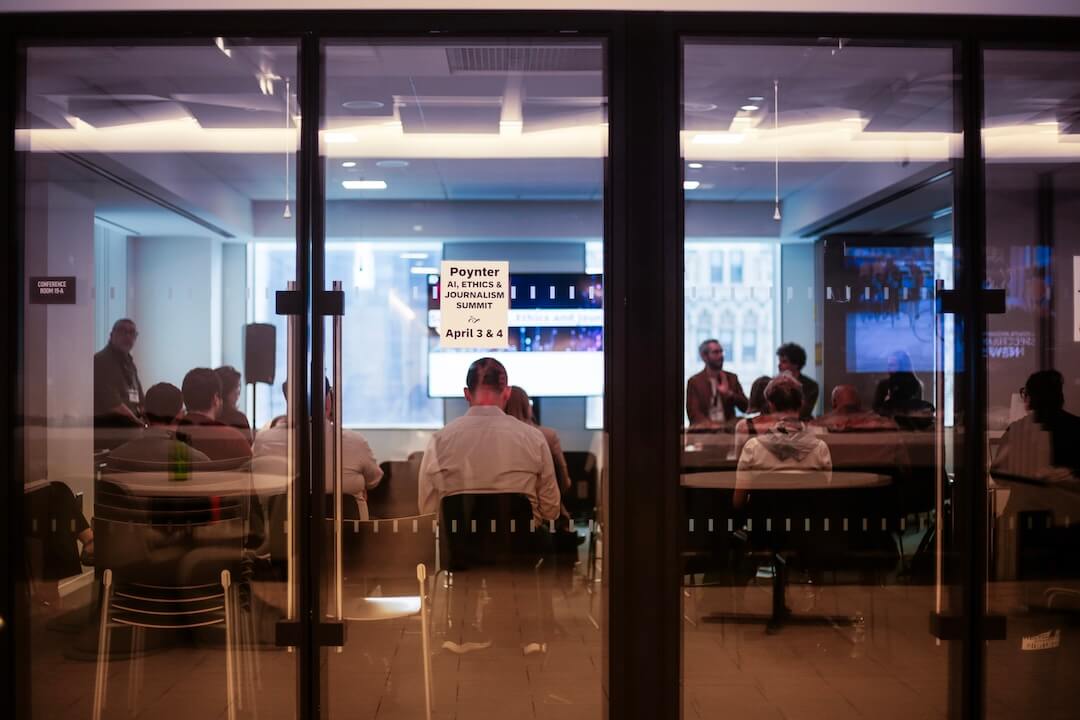
John Carroll speaking in this 2003 file photo. At middle is Todd Merriman, who was the senior editor/news of The San Diego Union-Tribune, and Kathleen Carroll, right, executive editor of The Associated Press. (AP Photo/Paul Sakuma)
When John Carroll visited me and Poynter in January 2013, he was a trim, vigorous retiree in his early 70s. So the news Sunday morning that he had died of a degenerative brain disease, diagnosed earlier this year, hit me hard.
On reflection, among many generous mentors, John may have been the most important to me. As the obituaries noted, he had uncanny skill at commissioning and editing big investigative projects, which won multiple Pulitzers for four different newspapers.
I don’t know that John ever gave a full “how-to” account of his approach, but here are five principles that stuck with me gleaned from the time I worked for him at the Philadelphia Inquirer and conversations later in our careers.
Great investigative ideas often come out of routine beat coverage:
And if beat coverage is eroding and out-of-style, some of those great opportunities are going unnoticed.
When we talked two years ago, John gave the example of the first of a string of Pulitzer winners at the Inquirer, a 1976 expose of conditions at the Farview State Hospital for the mentally ill by Acel Moore and Wendell Rawls Jr.
The germ of the story, Carroll said, came when Moore attended a meeting of an obscure state mental health commission on a Saturday. If no one had gone to the meeting, the story and reforms that followed would never have happened.
The approach led to Carroll projects on a wide range of unusual topics from the environmental hazards of breaking down ships to slavery in the Sudan (two from his years at the Baltimore Sun).
This truism cuts three ways. For reporters, it’s a reminder that great stories may be lurking in mundane assignments. An imaginative editor ought to be able to see those greater possibilities (a skill at which John was a master). And owners and publishers, forced by finances to make deep staff cuts, may find the supply of leads shrinking even as they maintain a commitment to investigations.
Indicters, explainers and teams:
I remember John saying that he thought many of the best reporters fell into one of two categories. Indicters have a particular passion for exposing and righting wrongs. Explainers have a gift for mastering the complexities of a situation then telling the story clearly.
Put an indicter and explainer together on an investigative team and you gain both complementary skills and a correction for an outcome that could otherwise be lopsidedly prosecutorial or low key and lacking an edge.
Two-person teams (Pulitzer winners Don Barlett and Jim Steele, Jonathan Neumann and Bill Marimow) were standard during the Inquirer’s golden era. It’s not the only way to develop a great investigative story, but it’s an potent one.
Dig, dig and dig some more:
As he was readying to leave the Inquirer to edit the Lexington Herald-Leader, John stopped by the quad where Don Kimelman (a fellow Ivy Leaguer) and I were sitting, with a thought:
Being smart and well-educated are assets, but for the most ambitious reporting, they are no substitute for relentless reporting — call after call after call, a patience for interviews, productive and not so productive.
We didn’t have performance reviews back then, but I took the point and (with lapses) have tried to practice it in writing, editing and hiring.
Tough guy versus tough-minded:
I’m not sure John said this so much as embodied it. He was a Southern gentleman, who rarely raised his voice. But he was plenty tough when it came to reporting and editing standards and not especially moved when a solid project brought bleats of protest from the subjects of an exposé.
Notable case in point: Carroll’s Los Angeles Times published a meticulously researched story on Arnold Schwarzenegger’s serial groping on the eve of the 2003 California election for governor.
The corollary for reporters is that a series of tough questions posed politely can often yield more than confrontation.
Taking ample time can be the margin between good and exceptional:
There comes a time to stop, write and get it published, but a great many of John’s projects spread over months and even years of reporting and went through an exhausting series of drafts.
That’s still often the practice at The New York Times and investigative enterprises like ProPublica, the Center for Public Integrity and others. But at many newspapers, turnaround times are compressed, and mounting the big project with space to breathe as it develops takes heroic effort and prioritizing.
Carroll ended his editing career concerned and a bit pessimistic, as summarized in a 2006 speech to the American Society of News Editors, entitled “Last Call at the ASNE Saloon.” He concluded:
It is important for us to understand, in clear English, what, exactly, a journalist is, and what a journalist is not. It is important for us to live by those beliefs, too, and to condemn those who use the trappings of journalism to engage in marketing or propaganda. And, finally, it is important for us to explain to the public why journalism — real journalism, practiced in good faith — is absolutely essential to a self-governing nation.
This is a cause that is larger than us and larger than our newspapers. It gives meaning to our labors in a difficult time.
Yes, it is possible that our newspapers will be further diminished, perhaps even lost altogether. And yes, it is even possible that the great bartender at the ASNE saloon will, someday, sound last call. If that day comes, let it never be said that we meekly drank up and walked away.
Returning to the personal, John hired me at the Inquirer in 1977 after my years at the Winston-Salem Journal, where his father Wally Carroll had hired me in 1970. So with only a little exaggeration, I could say I turned 30 as a journalist having reported only for Carrolls (and the better for it).
I worked directly for John for just a few months. He departed for Lexington midway through my five years at the Inquirer.
But when I did get a chance to work on a major national investigative project there, the experience checked off all five of the boxes above. The project, uncovering and explaining rare instances of live births following abortions, had roots in reporting I did as Delaware editor on two such events within months at a Wilmington hospital. If it had happened twice in Wilmington, how often nationwide?
John’s successor as metropolitan editor, Jim Naughton (another important mentor) paired me with a freelancer who was passionate on the topic. Two years of off-and-on reporting and multiple drafts later we had published a story, “Abortion: The Dreaded Complication” that ultimately became a Pulitzer finalist for national reporting in 1982. There was some fierce internal opposition to even publishing the story, and I later declined the offer of a Right-to-Life journalist-of-the-year honor.
It occurs to me that many reporters and editors worked much later and longer for John and have deeper insights into the combination of skills and character underlying the body of far-reaching projects he oversaw.
In academia, there’s a practice of colleagues’ putting together essays in honor of a retiring or late professor called a Festschrift. Recognizing that John would probably prefer to see fresh investigations, he seems to me a perfect journalism candidate for that kind of celebration.
So send me memories of John Carroll, peerless investigative editor, and I’ll try to see to getting them collected.







